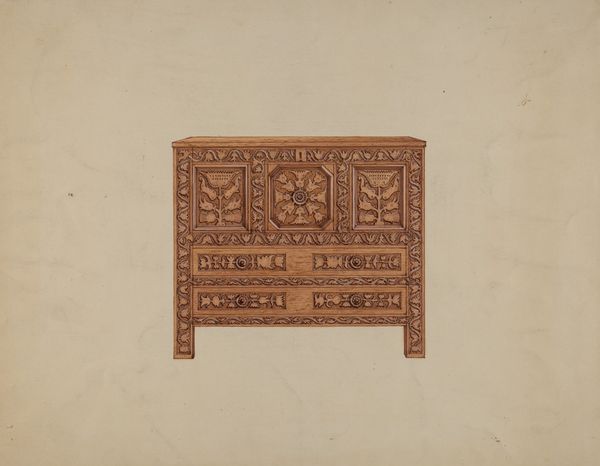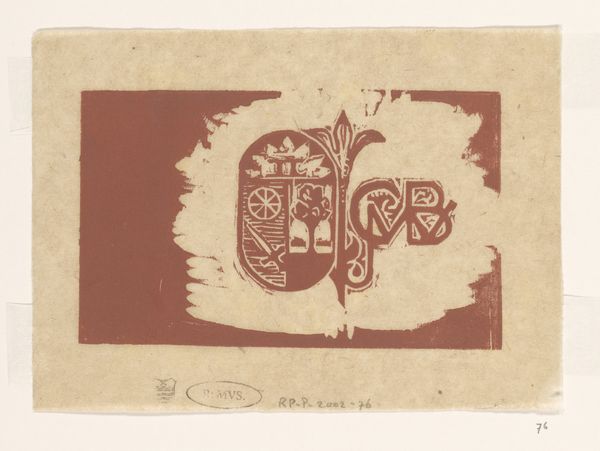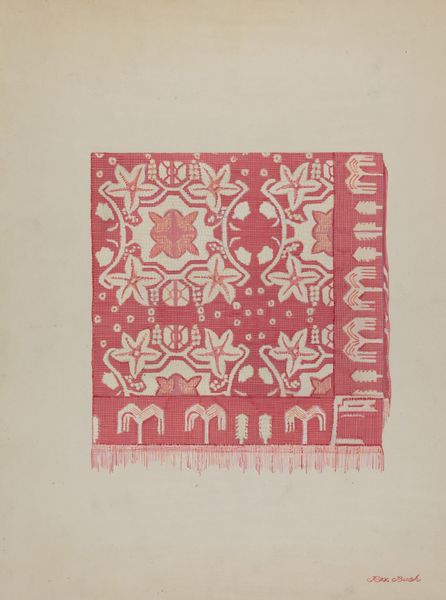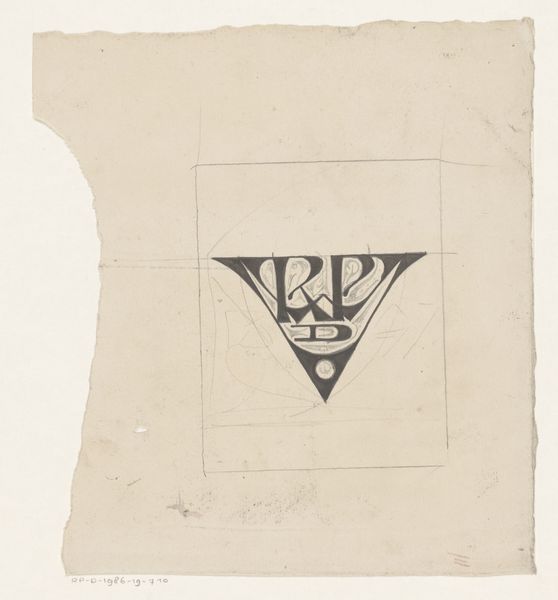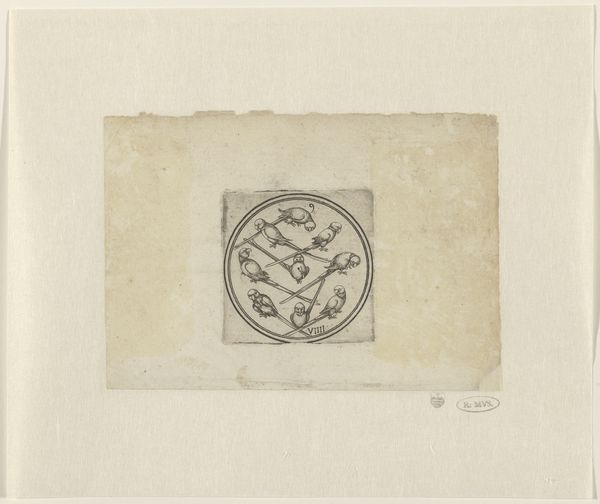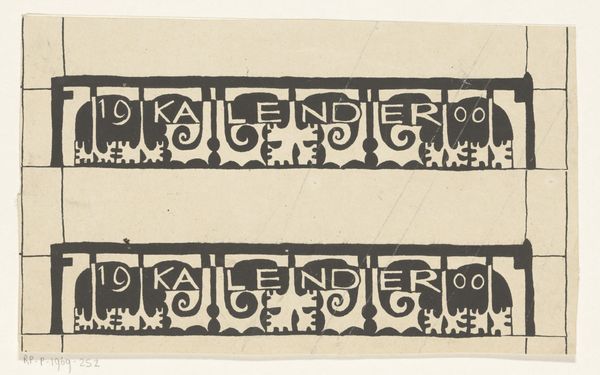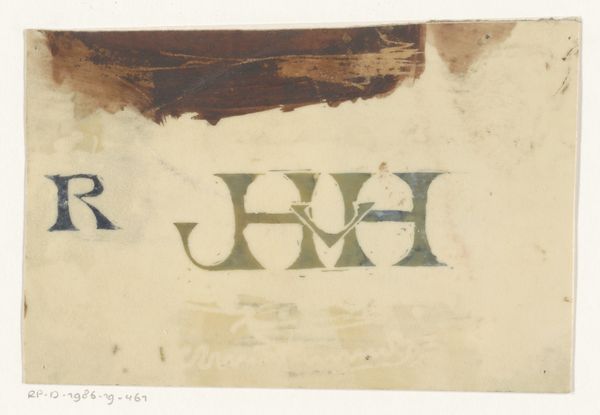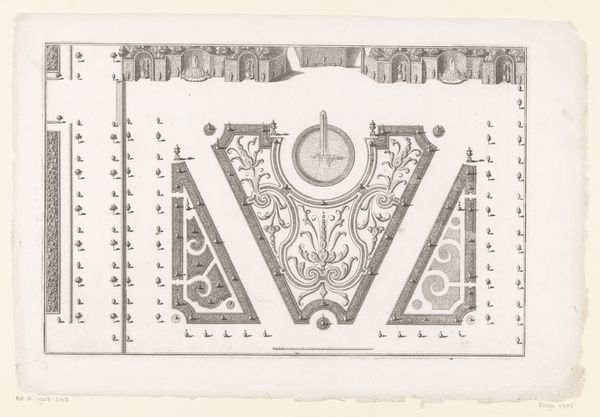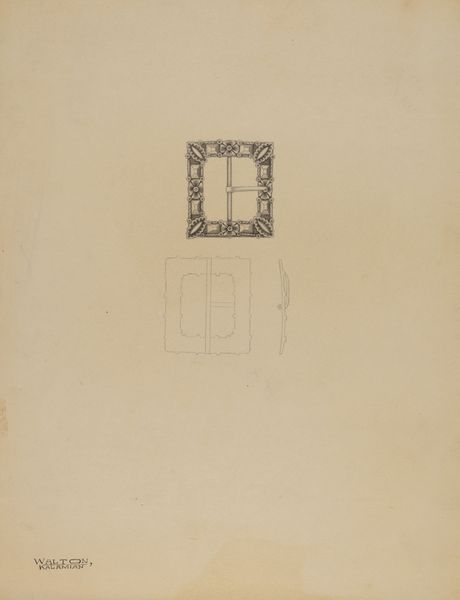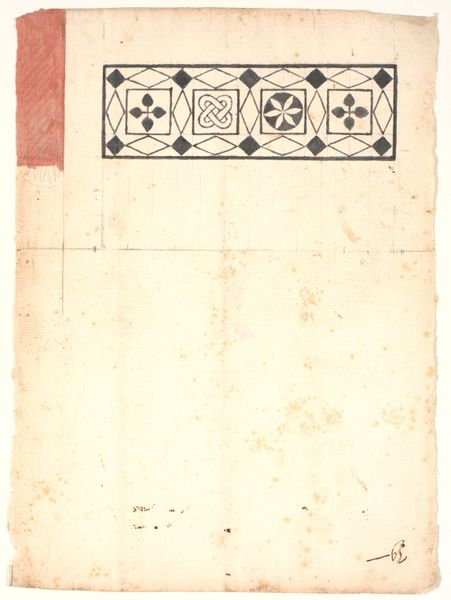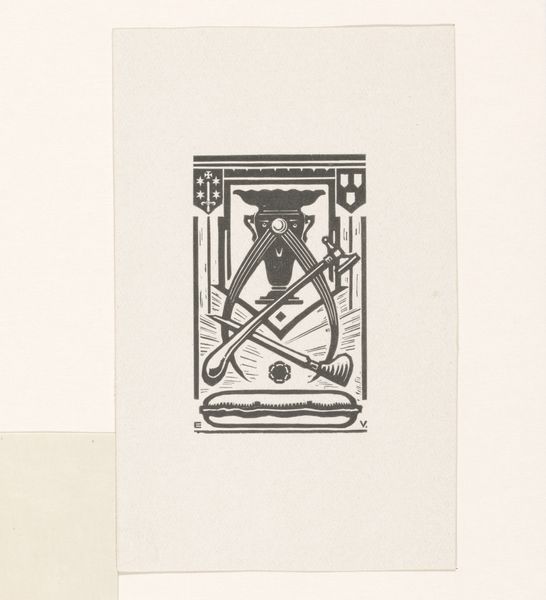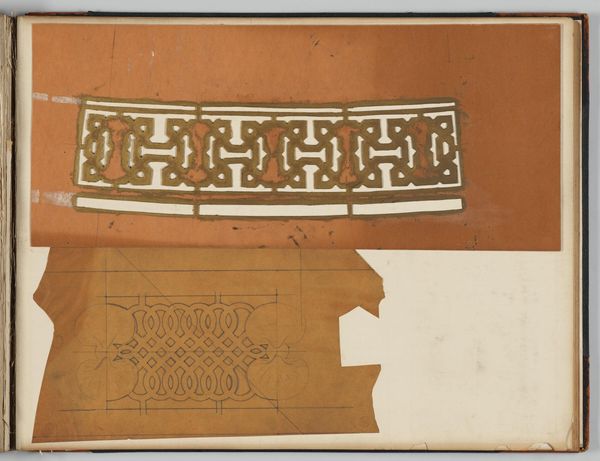
graphic-art, print, typography, woodcut
#
graphic-art
#
art-nouveau
# print
#
typography
#
woodcut
#
symbolism
Dimensions: height 67 mm, width 64 mm
Copyright: Rijks Museum: Open Domain
Editor: This is "Letters," a woodcut print by Bernard Willem Wierink from around 1910. The bold typography feels so modern, almost like an advertisement, yet there’s something old-world and hand-crafted about it, too. How do you interpret this work, seeing those dueling approaches? Curator: This piece truly speaks to the transitional moment of the Art Nouveau movement. While it embodies the aesthetics of handcrafted design celebrated by the Arts and Crafts movement, its focus on typography suggests the rise of commercialism. Have you considered how the very act of printing, a form of dissemination, inherently engages with societal access and potential shifts in power? Editor: Not until you pointed it out. I was so focused on the "arts" side of the Arts and Crafts movement that I didn't think of what its reaction would be against rising commercialism and distribution models. It brings to mind discussions about the rise of consumer culture at that time and anxieties around mass production and accessibility. It becomes so much more than just decorative letters. Curator: Exactly. The choice of medium – the woodcut – speaks to this tension. Woodcut is a labor-intensive process, positioning itself against mass production. The imagery becomes coded with values of labor and uniqueness. What do you think, then, these specific letters, "O" and "M" may point to? Editor: Well, those were also my initials on this project, haha. That aside, maybe "O" stands for object and "M" stands for maybe...man, representing society? That is, as objects gain mass in society, do we, in turn, become products to produce objects? Curator: You're moving to a direction beyond me. Your insight unveils how we can continually re-evaluate art by placing current thinking upon pieces, providing space for novel, unexpected understandings of it. What a refreshing perspective. Editor: Thanks for helping me dig a little deeper into my approach, I definitely won't overlook the socioeconomic aspects of artwork as readily.
Comments
No comments
Be the first to comment and join the conversation on the ultimate creative platform.
